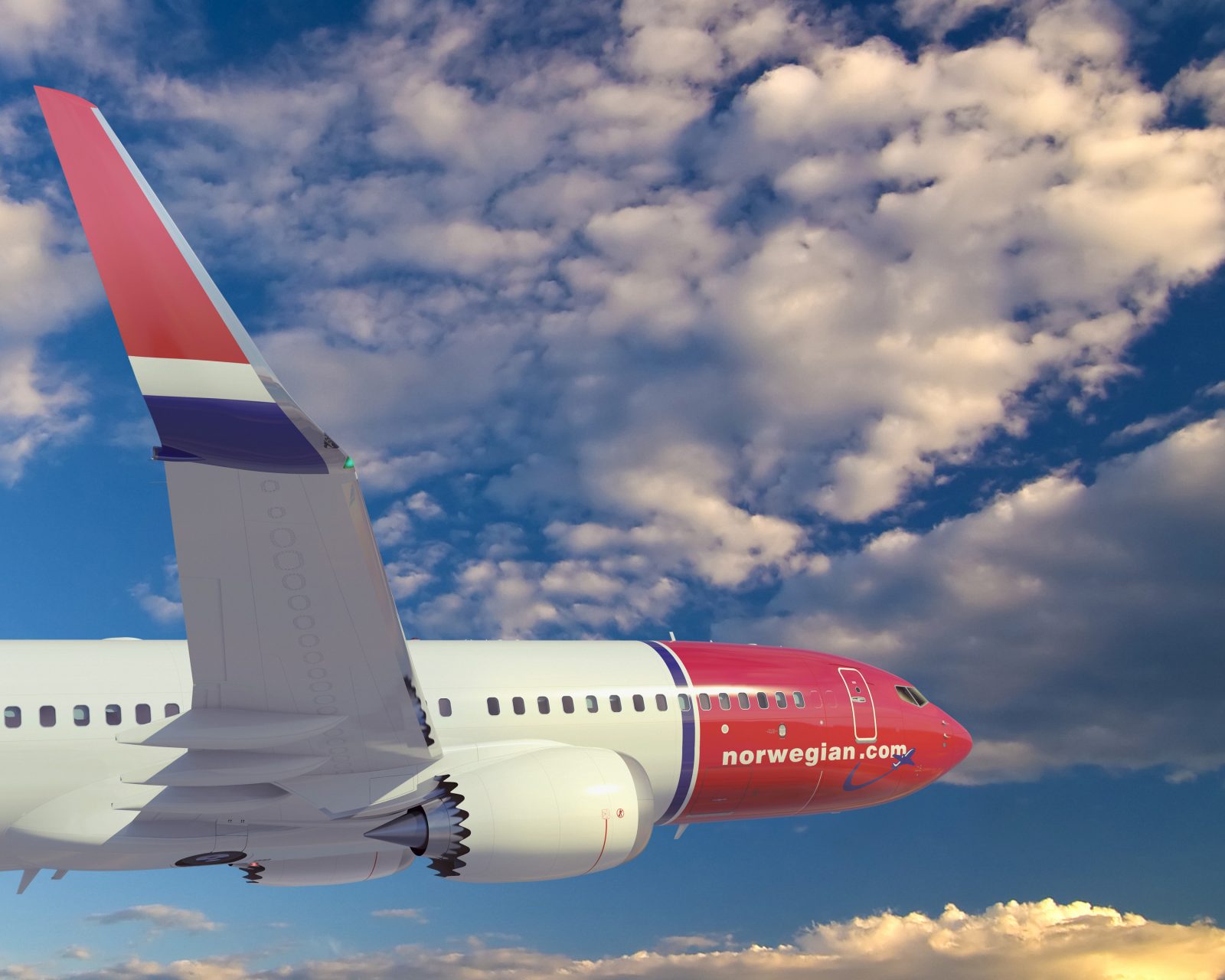
The chief executive of the low-cost airline, Norwegian has said the software patch being developed by Boeing for its 737 MAX aircraft “seems foolproof” after he put the new system to the test in a simulator at a Boeing facility near Seattle. Bjorn Kjos, who is himself a pilot, travelled to Seattle on Monday to have meetings with Boeing about the 737 MAX issues. He has previously said that he will be looking to secure compensation from Boeing for the grounding of its MAX fleet.
Earlier today, Kjos described the meetings he had so far had with Boeing as “good” and said the two sides had discussed how they “can manoeuvre through this difficult situation”. All Boeing 737 MAX aircraft worldwide have been grounded since the 13th March following an emergency directive from the Federal Aviation Administration (FAA).
The order from the FAA followed two fatal crashes of the aircraft type within six months – the 10th March crash of Ethiopian Airlines Flight 302 which killed all 157 people aboard and the October 2018 crash of Lion Air flight 610 where all 189 passengers and crew were killed.
1/3: Today, I was in a MAX simulator, testing the old and the new MCAS software under a malfunction. For pilots used to flying with the trim you can see that under my left thumb it is easy to stop the trim and recover if a malfunction would occur. pic.twitter.com/e4zXotwls0
— Bjørn Kjos (@bjornkjos) April 3, 2019
The investigations of the two fatal crashes have so far centred on a new flight control system introduced on the 737 MAX 8 called MCAS or Maneuvering Characteristics Augmentation System. MCAS is an automated safety feature which is meant to stop the plane entering a stall or losing lift. It was introduced because the 737 MAX 8 has larger, heavier engines than older versions of the aircraft type which in turn can change its aerodynamic qualities.
It’s suspected that the MCAS system malfunctioned in both the Lion Air and Ethiopian Airlines disasters. Boeing has come in for heavy criticism for the way it delivered training to pilots over the safety feature – critics claim this left pilots with little knowledge of what to do should the system malfunction.
Boeing has been working on a software patch to improve MCAS and has already met with over 200 airline pilots, regulators and safety experts to show off the proposed system and training update but the details of these meetings have so far been kept under wraps.
2/3: You can turn the system completely off using the switches you see on the low right (pic previous tweet). The new system seems foolproof even if you don’t fly using the trim, or if you don’t turn it off if a malfunction occurs.
— Bjørn Kjos (@bjornkjos) April 3, 2019
3/3: I hope the regulators will have safety in focus as always and not be directed by politics. I will gladly take my family on board a Norwegian MAX.
— Bjørn Kjos (@bjornkjos) April 3, 2019
Despite the fast turnaround from Boeing’s engineers, hopes of a quick return to service for the 737 MAX seemed dashed when the FAA released a statement on Monday saying it not only didn’t expect to receive the final package from Boeing for at least several more weeks but the finished software patch would be subject to a “rigorous safety review”.
The tone and language of the statement suggested it may be months and not weeks before the 737 MAX is cleared for flight again.
But Kjos says that after putting the system update through its paces he would “gladly take my family on board a Norwegian MAX.” Kjos commented on the decision-making process: “I hope the regulators will have safety in focus as always and not be directed by politics.”
Norwegian currently has 18 Boeing 737 MAX 8 aircraft and has been forced to wetlease aircraft to operate some flights because of the grounding. Proactively responding to questions about what effect the grounding might have on Norwegian’s financial situation, Kjos says the airline will be sending the bill to Boeing.
Two unnamed sources quoted by the Wall Street Journal today said the pilots of the Ethiopian Airlines aircraft that crashed had initially followed Boeing’s prescribed emergency procedures which included turning off an automated flight-control system but could not recover the aircraft before it crashed.
Mateusz Maszczynski honed his skills as an international flight attendant at the most prominent airline in the Middle East and has been flying ever since... most recently for a well known European airline. Matt is passionate about the aviation industry and has become an expert in passenger experience and human-centric stories. Always keeping an ear close to the ground, Matt's industry insights, analysis and news coverage is frequently relied upon by some of the biggest names in journalism.







